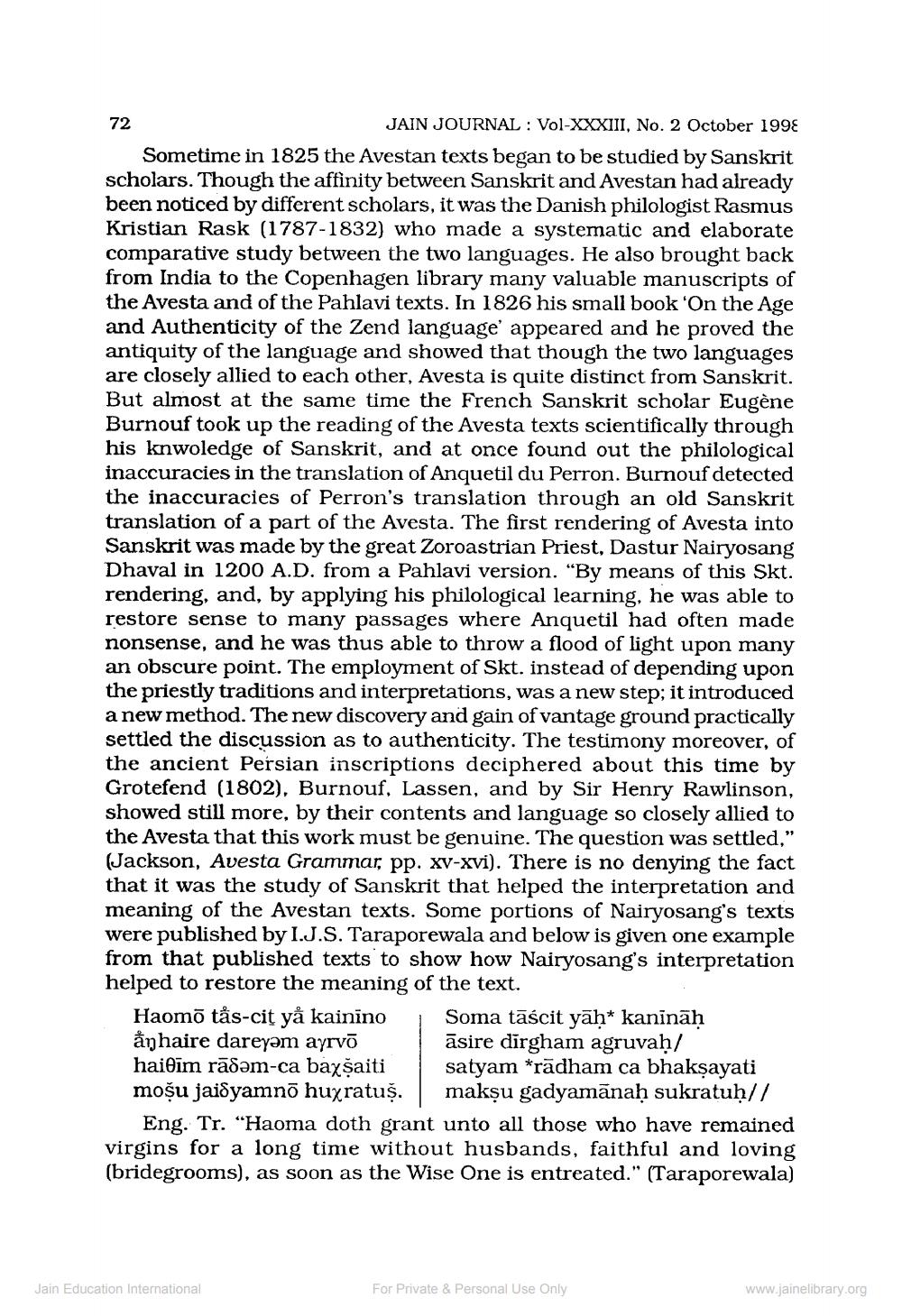________________
JAIN JOURNAL: Vol-XXXIII, No. 2 October 1998
Sometime in 1825 the Avestan texts began to be studied by Sanskrit scholars. Though the affinity between Sanskrit and Avestan had already been noticed by different scholars, it was the Danish philologist Rasmus Kristian Rask (1787-1832) who made a systematic and elaborate comparative study between the two languages. He also brought back from India to the Copenhagen library many valuable manuscripts of the Avesta and of the Pahlavi texts. In 1826 his small book 'On the Age and Authenticity of the Zend language' appeared and he proved the antiquity of the language and showed that though the two languages are closely allied to each other, Avesta is quite distinct from Sanskrit. But almost at the same time the French Sanskrit scholar Eugène Burnouf took up the reading of the Avesta texts scientifically through his knwoledge of Sanskrit, and at once found out the philological inaccuracies in the translation of Anquetil du Perron. Burnouf detected the inaccuracies of Perron's translation through an old Sanskrit translation of a part of the Avesta. The first rendering of Avesta into Sanskrit was made by the great Zoroastrian Priest, Dastur Nairyosang Dhaval in 1200 A.D. from a Pahlavi version. "By means of this Skt. rendering, and, by applying his philological learning, he was able to restore sense to many passages where Anquetil had often made nonsense, and he was thus able to throw a flood of light upon many an obscure point. The employment of Skt. instead of depending upon the priestly traditions and interpretations, was a new step; it introduced a new method. The new discovery and gain of vantage ground practically settled the discussion as to authenticity. The testimony moreover, of the ancient Persian inscriptions deciphered about this time by Grotefend (1802), Burnouf, Lassen, and by Sir Henry Rawlinson, showed still more, by their contents and language so closely allied to the Avesta that this work must be genuine. The question was settled," (Jackson, Avesta Grammar, pp. xv-xvi). There is no denying the fact that it was the study of Sanskrit that helped the interpretation and meaning of the Avestan texts. Some portions of Nairyosang's texts were published by I.J.S. Taraporewala and below is given one example from that published texts to show how Nairyosang's interpretation helped to restore the meaning of the text.
72
Haomō tås-cit yå kainino ånhaire dareyǝm ayrvō hailim rādǝm-ca baxsaiti mošu jaidyamnō huxratus.
Soma tāścit yāḥ* kanināḥ asire dirgham agruvaḥ/ satyam *rādham ca bhakṣayati maksu gadyamanaḥ sukratuḥ//
Eng. Tr. "Haoma doth grant unto all those who have remained virgins for a long time without husbands, faithful and loving (bridegrooms), as soon as the Wise One is entreated." (Taraporewala)
Jain Education International
For Private & Personal Use Only
www.jainelibrary.org




